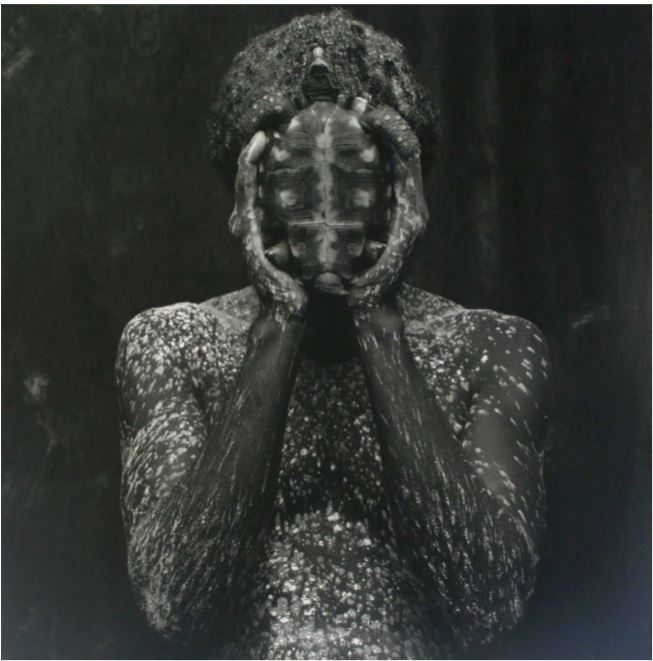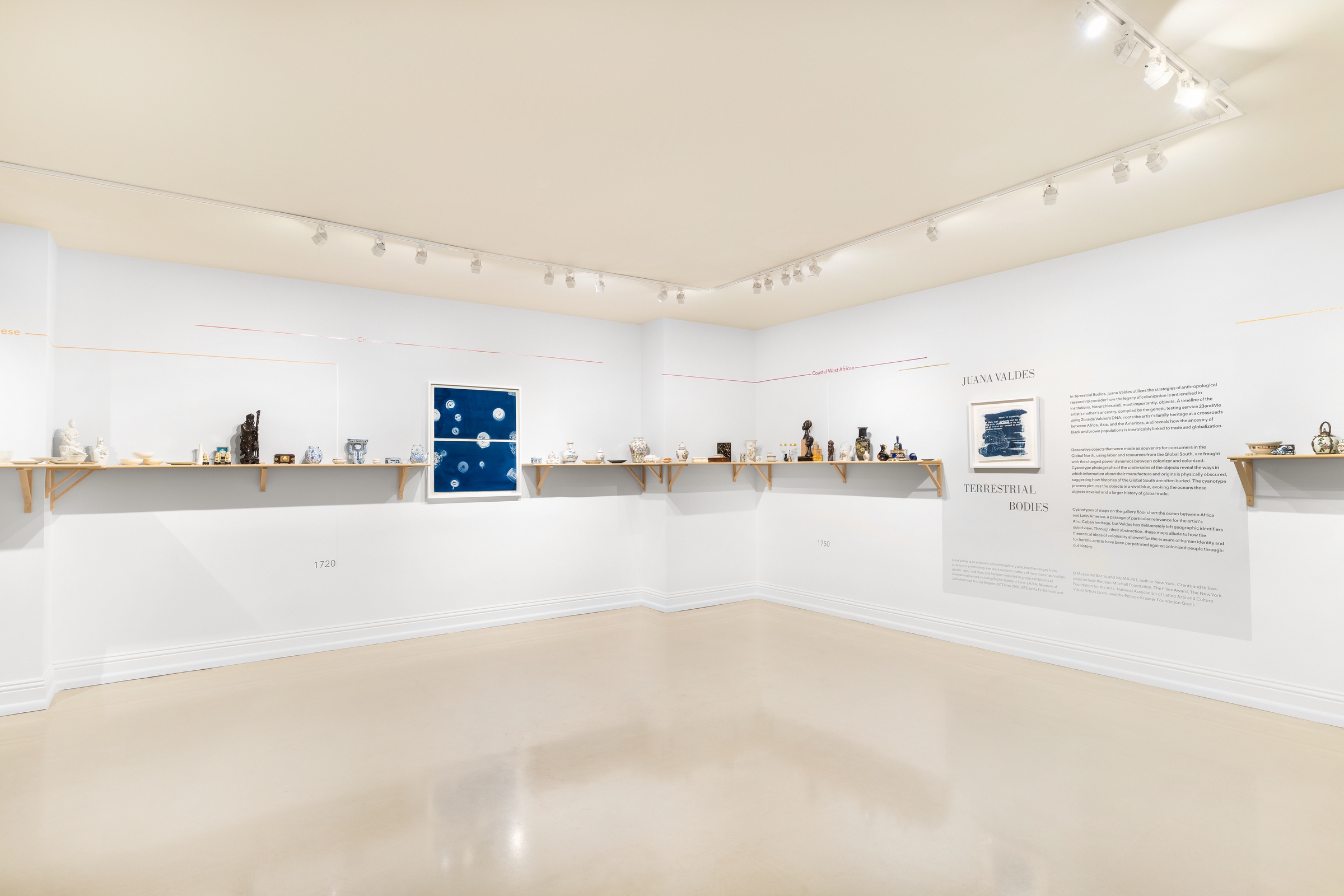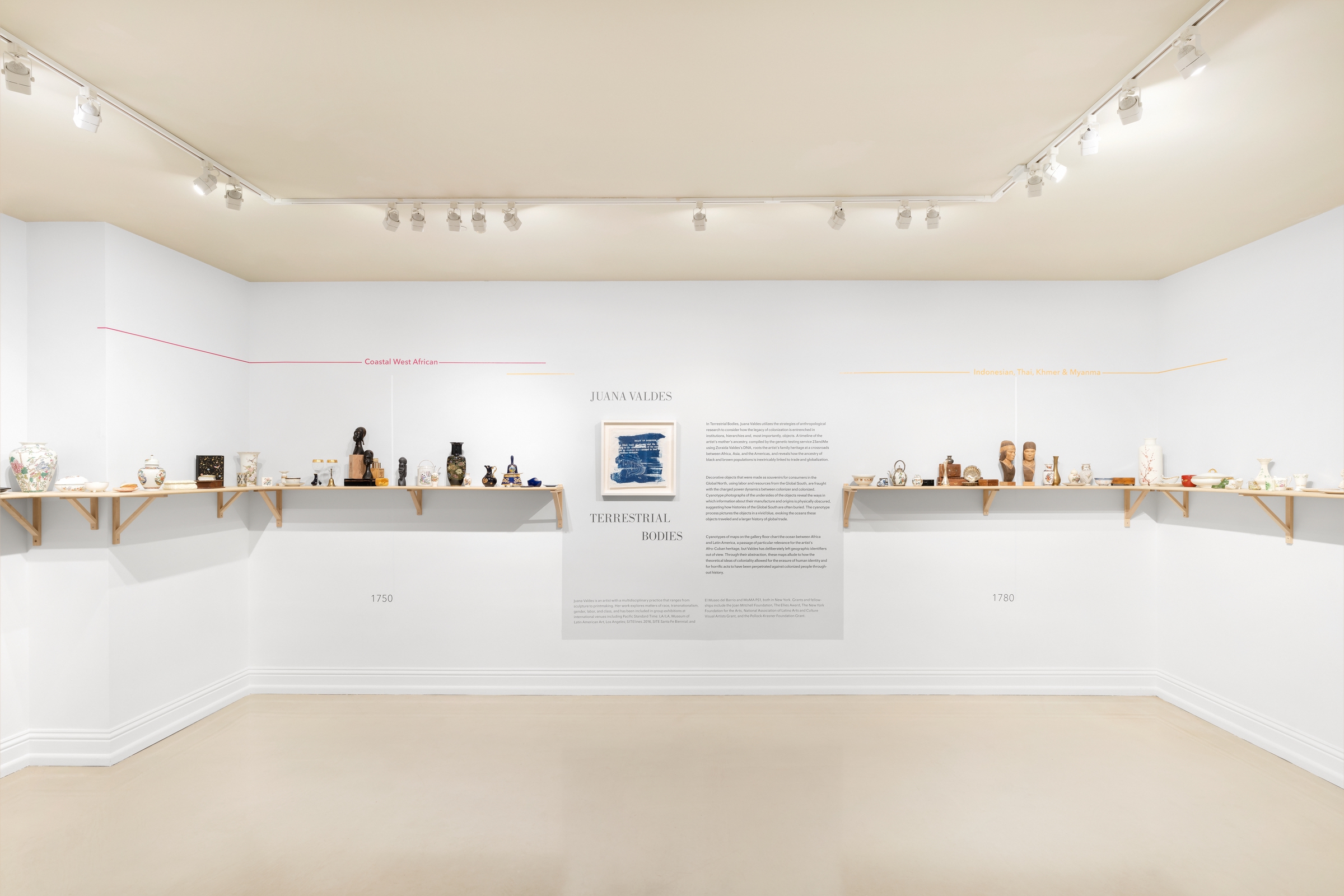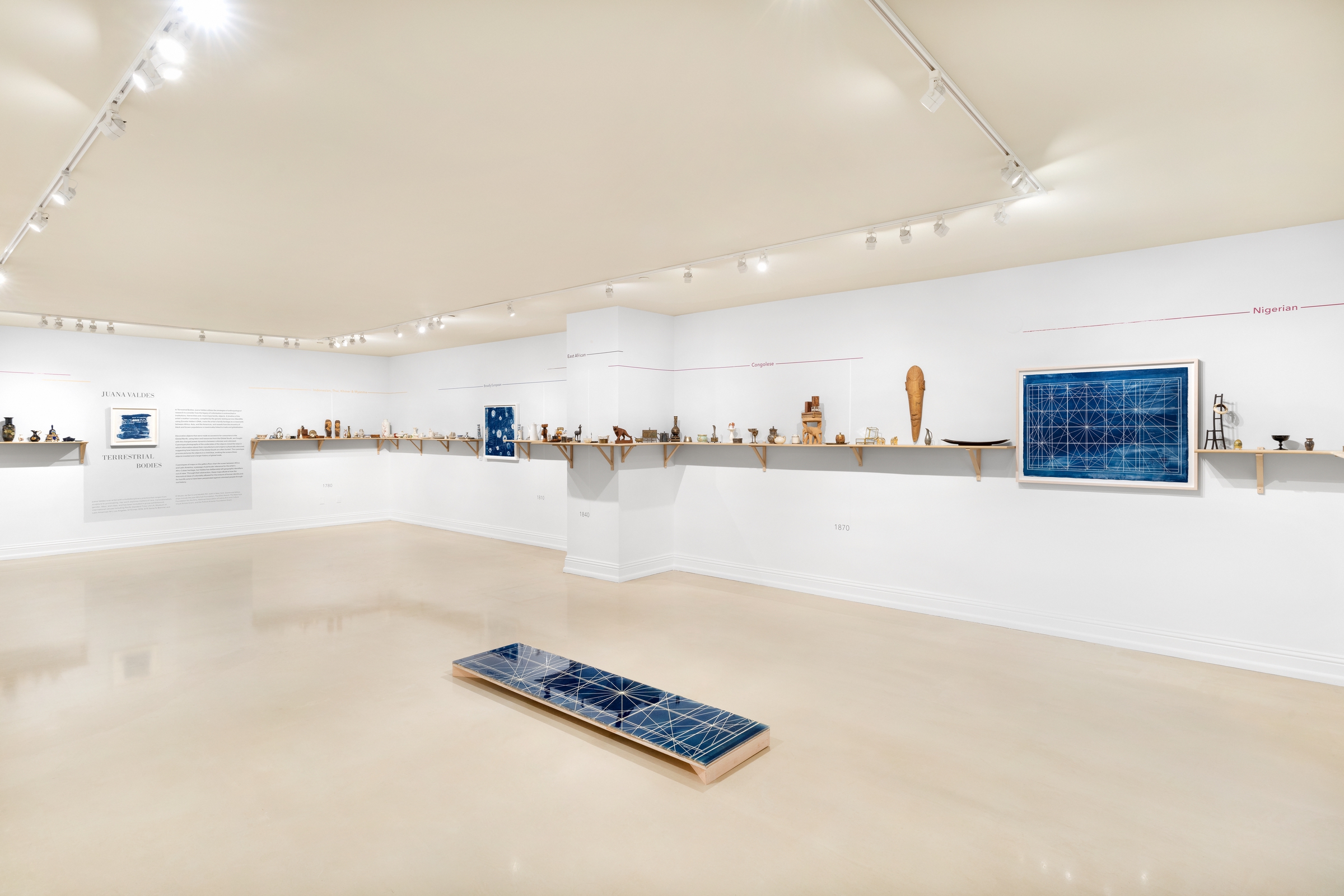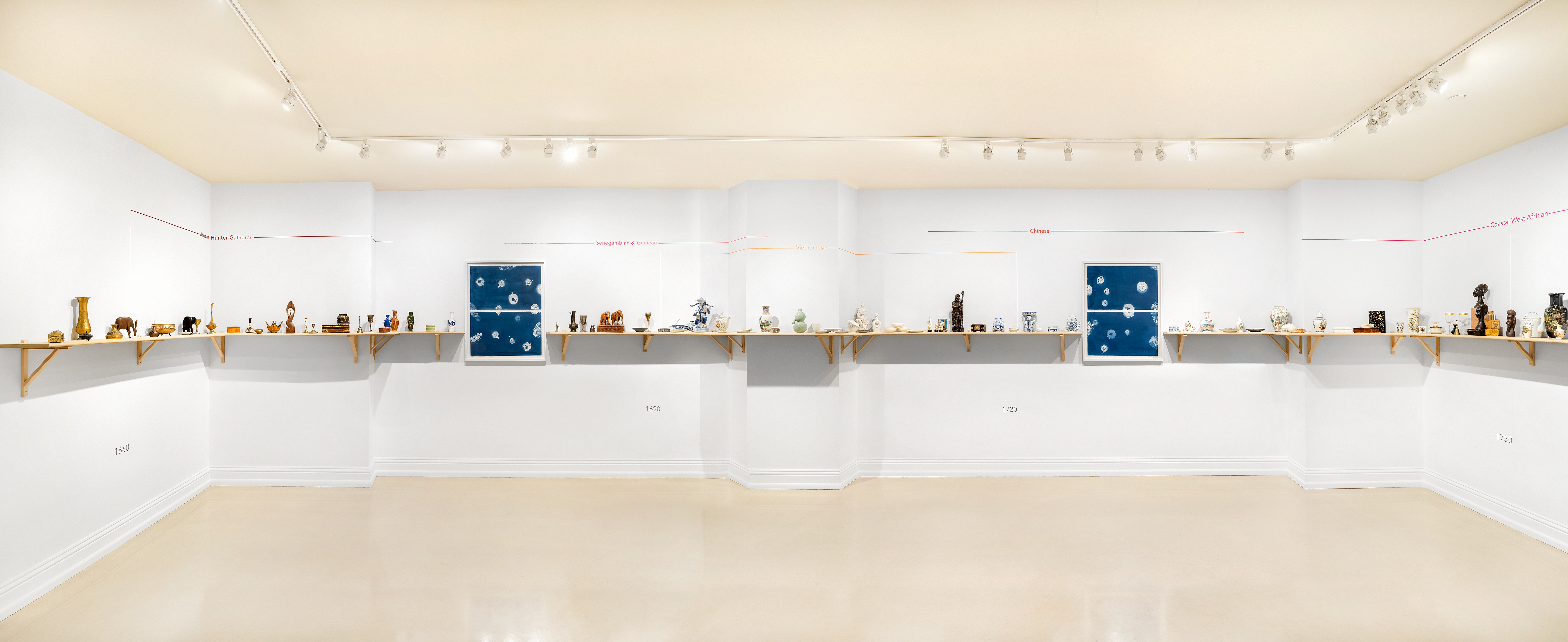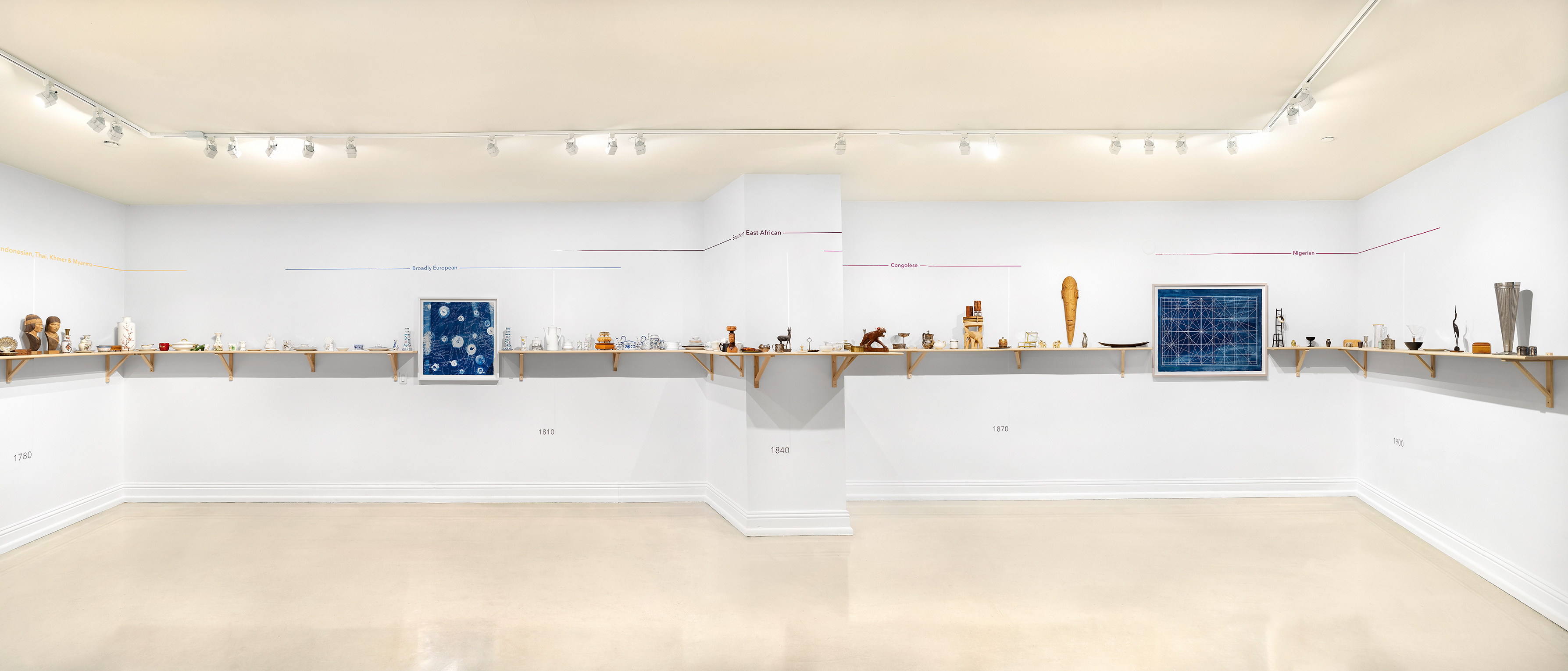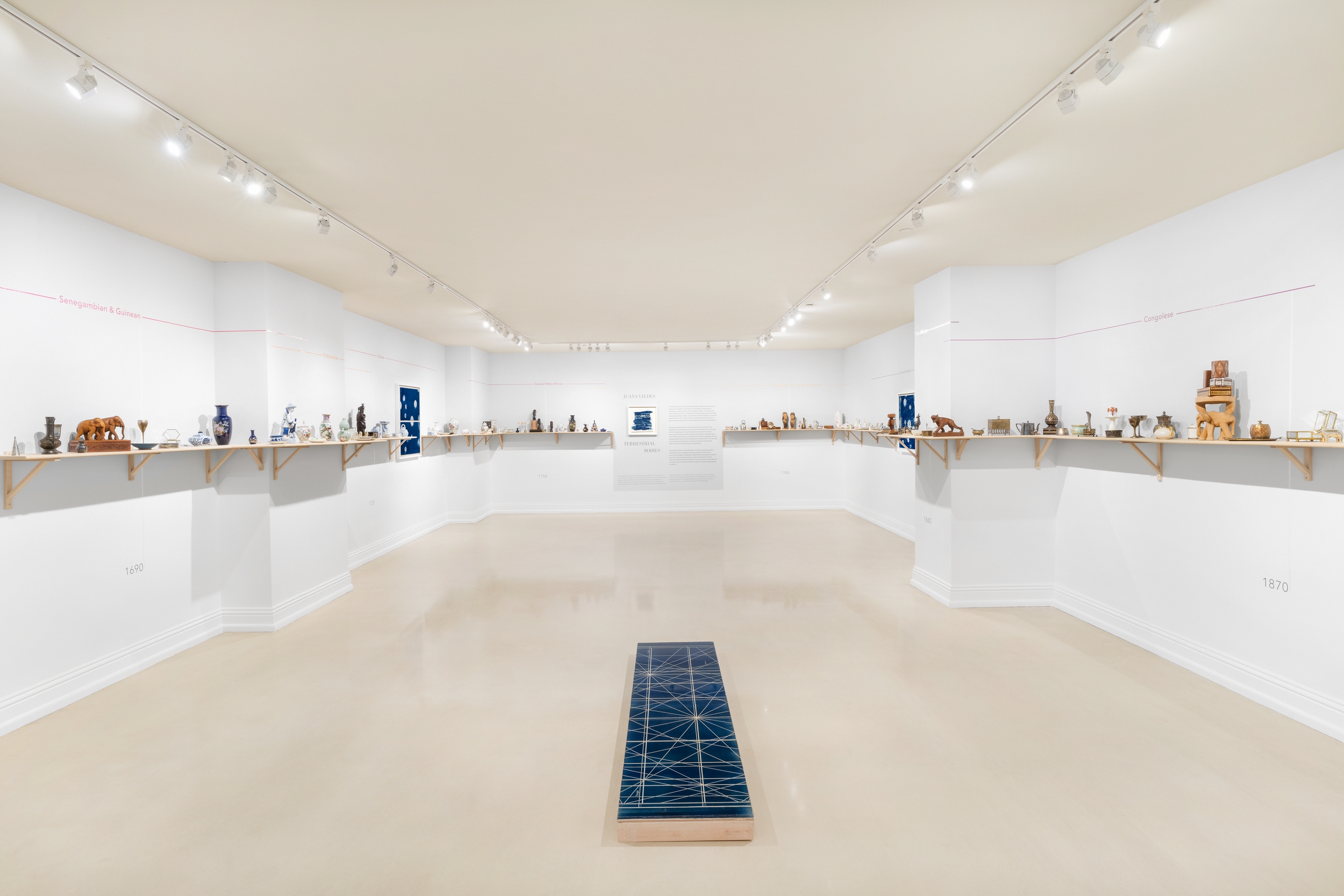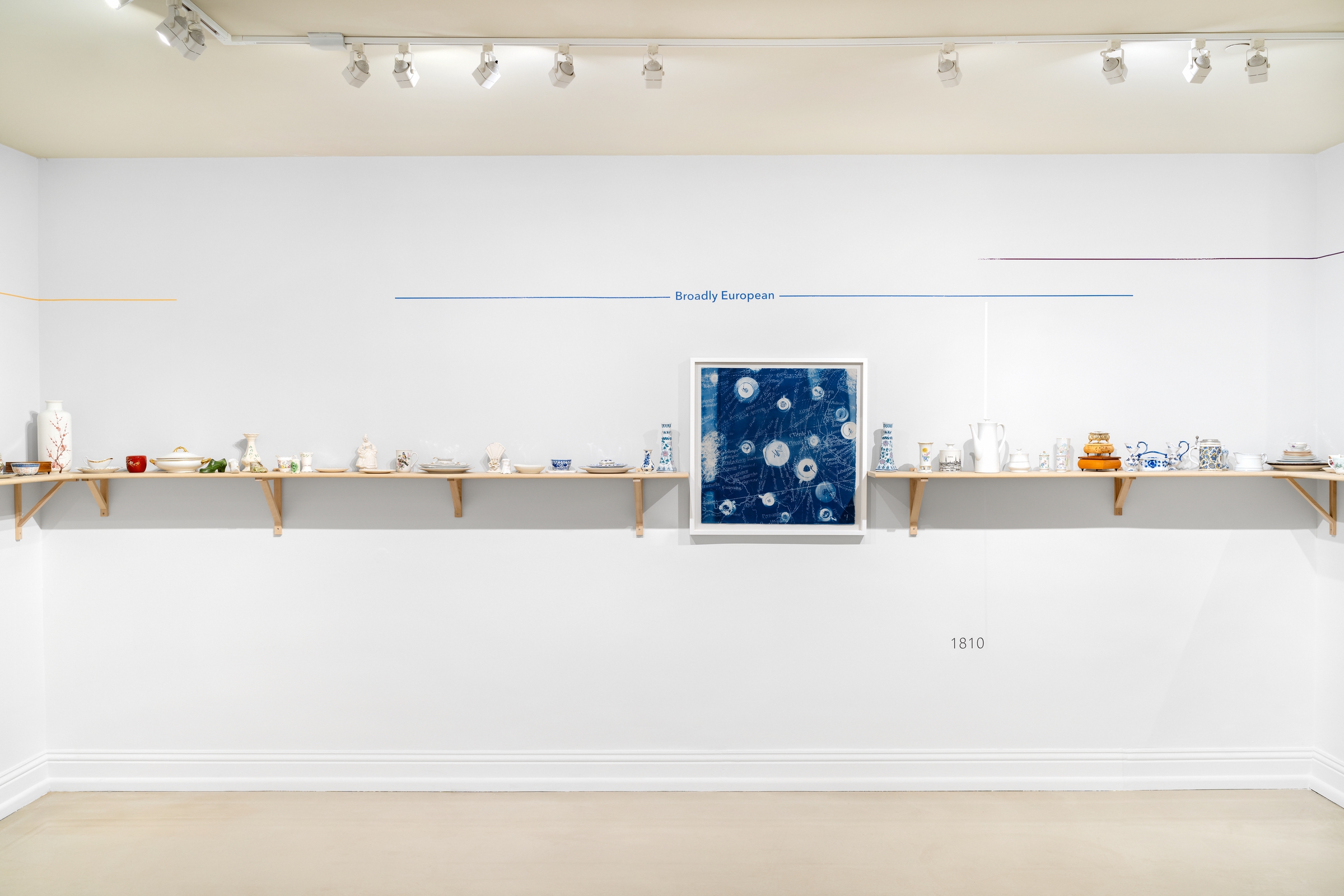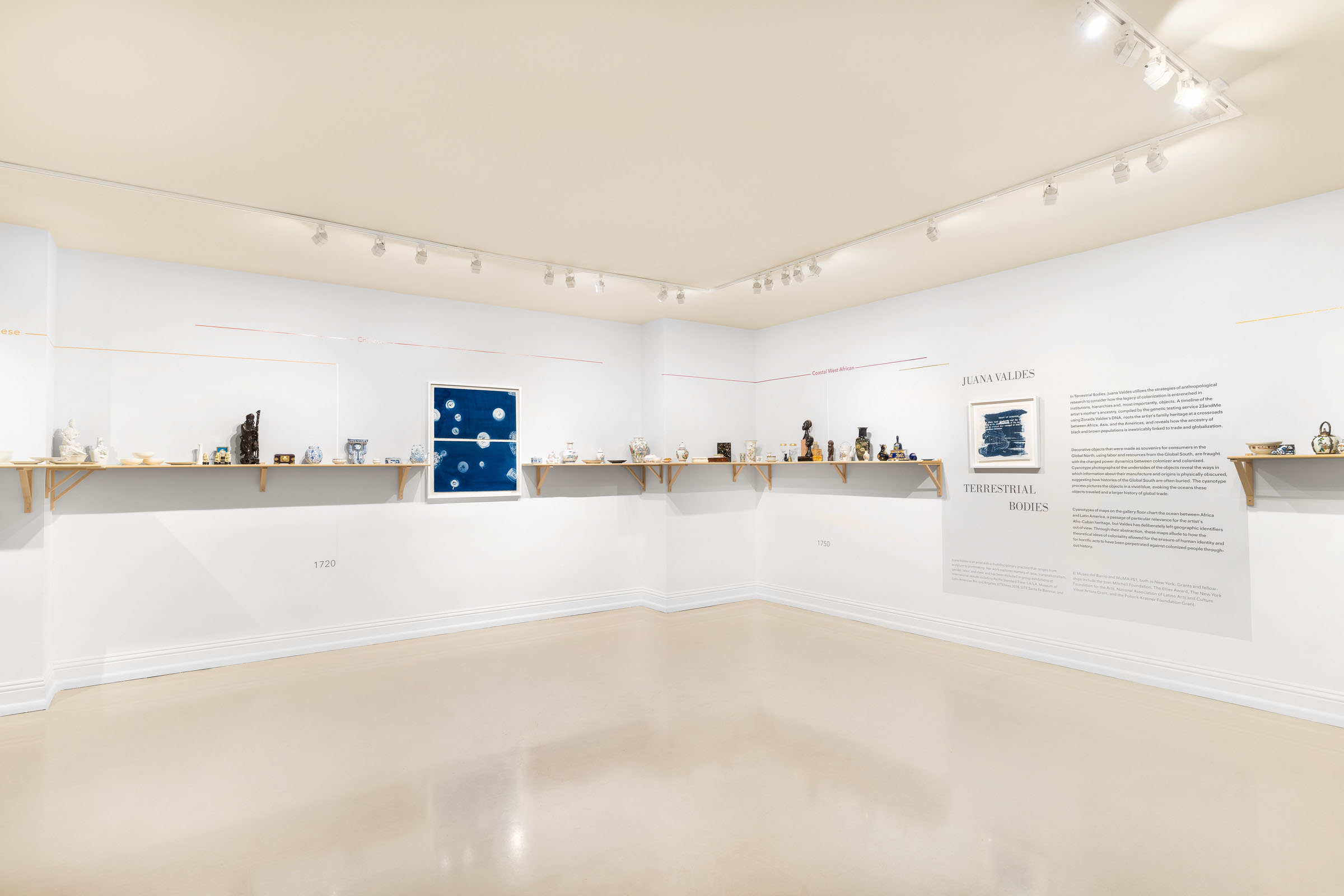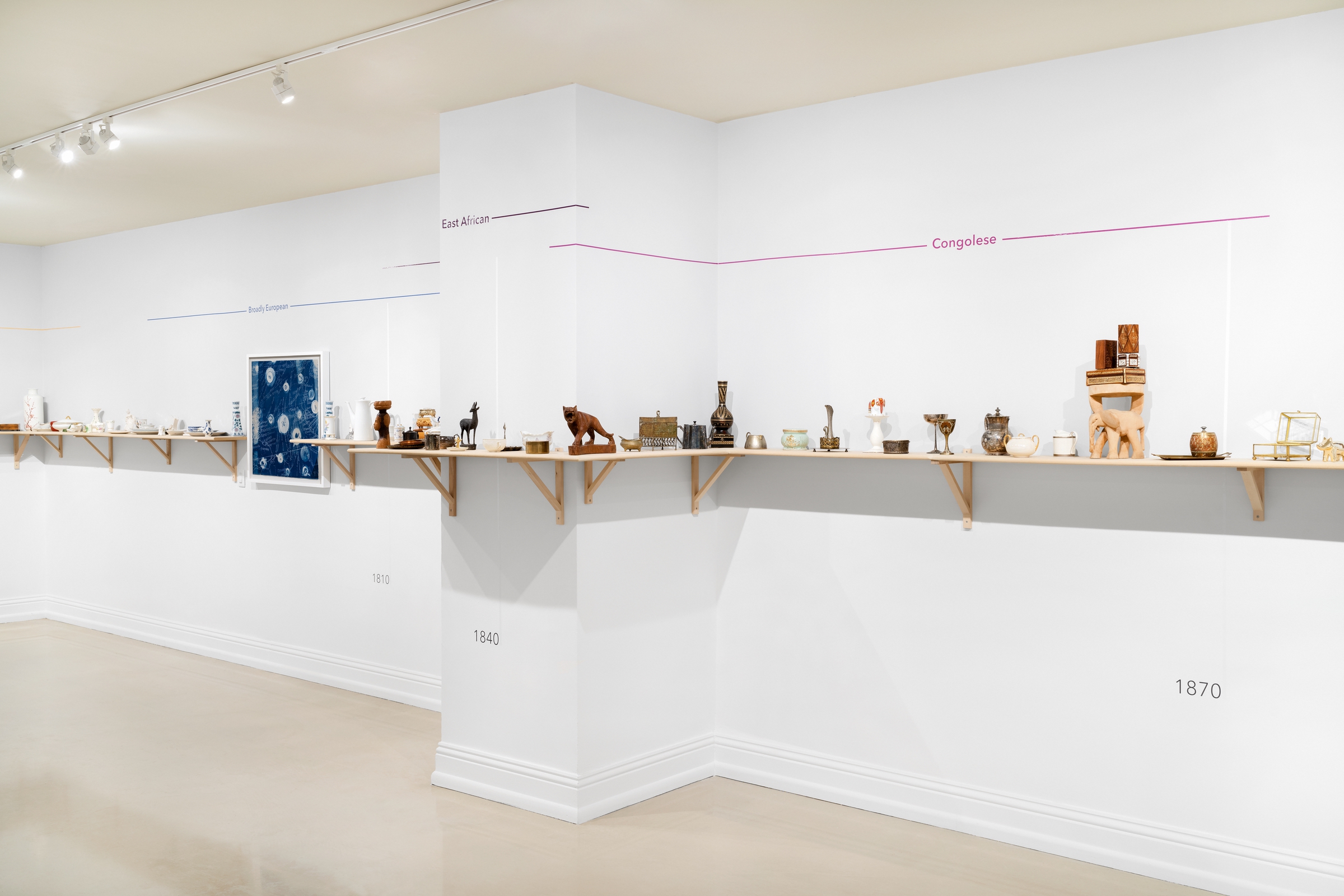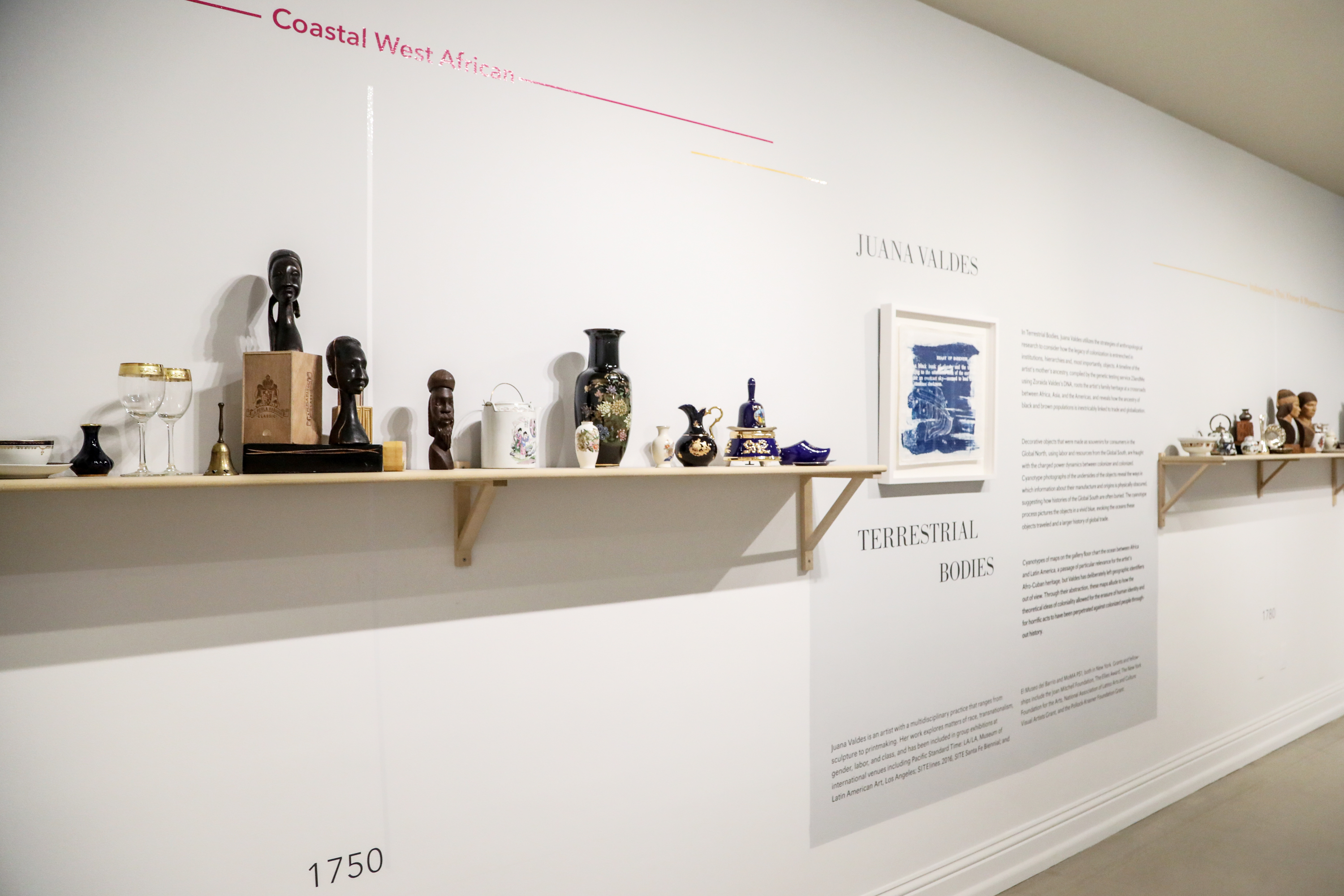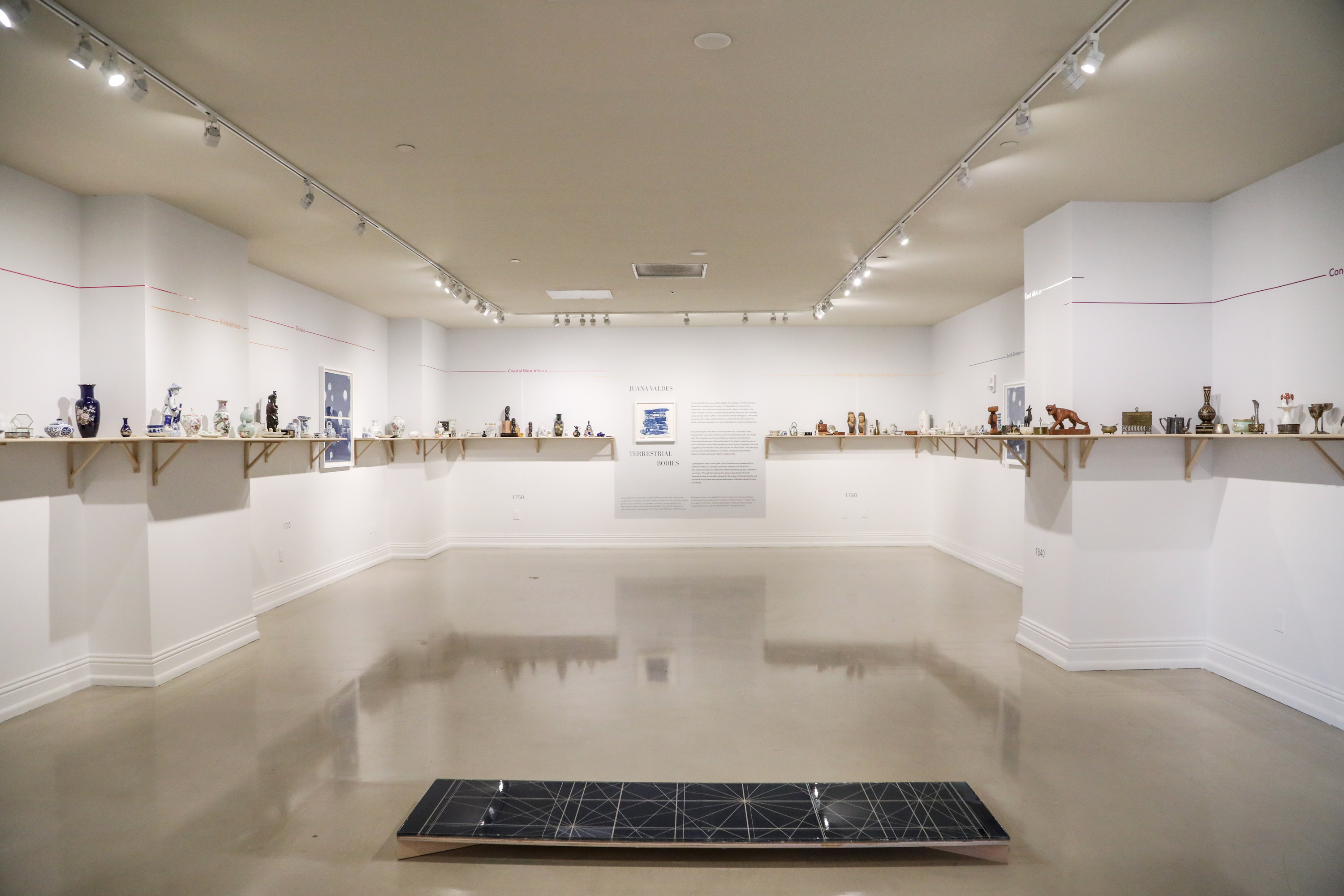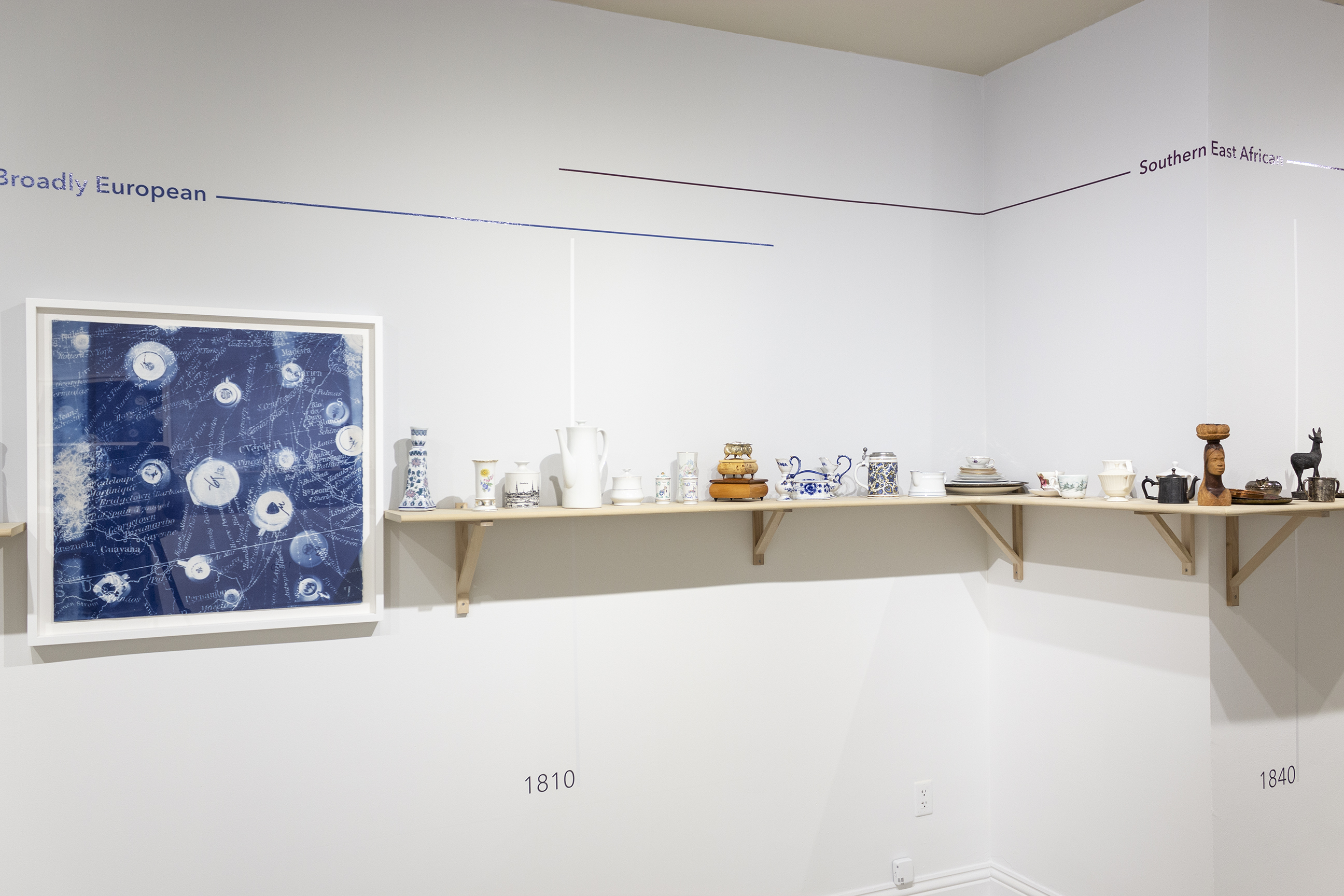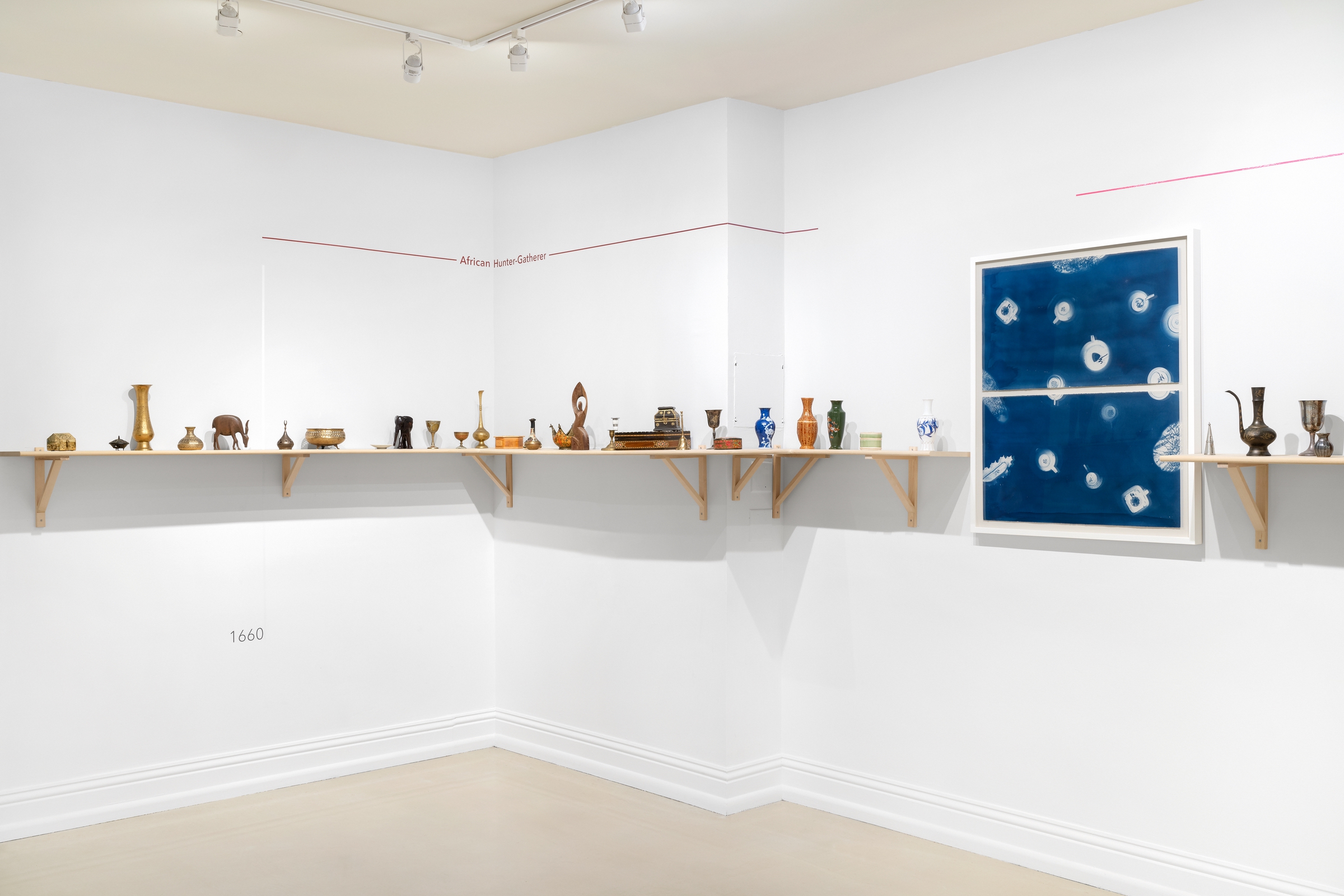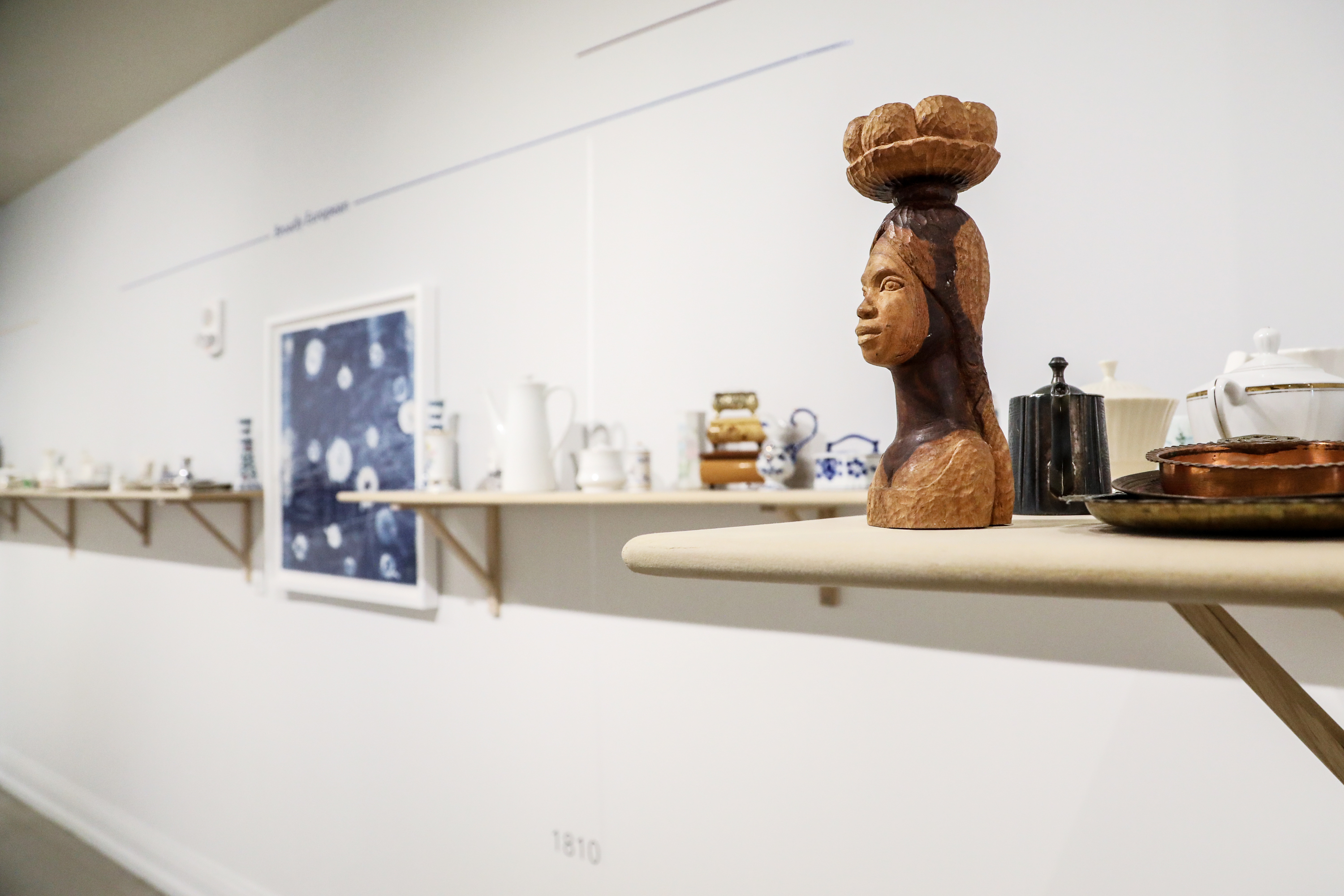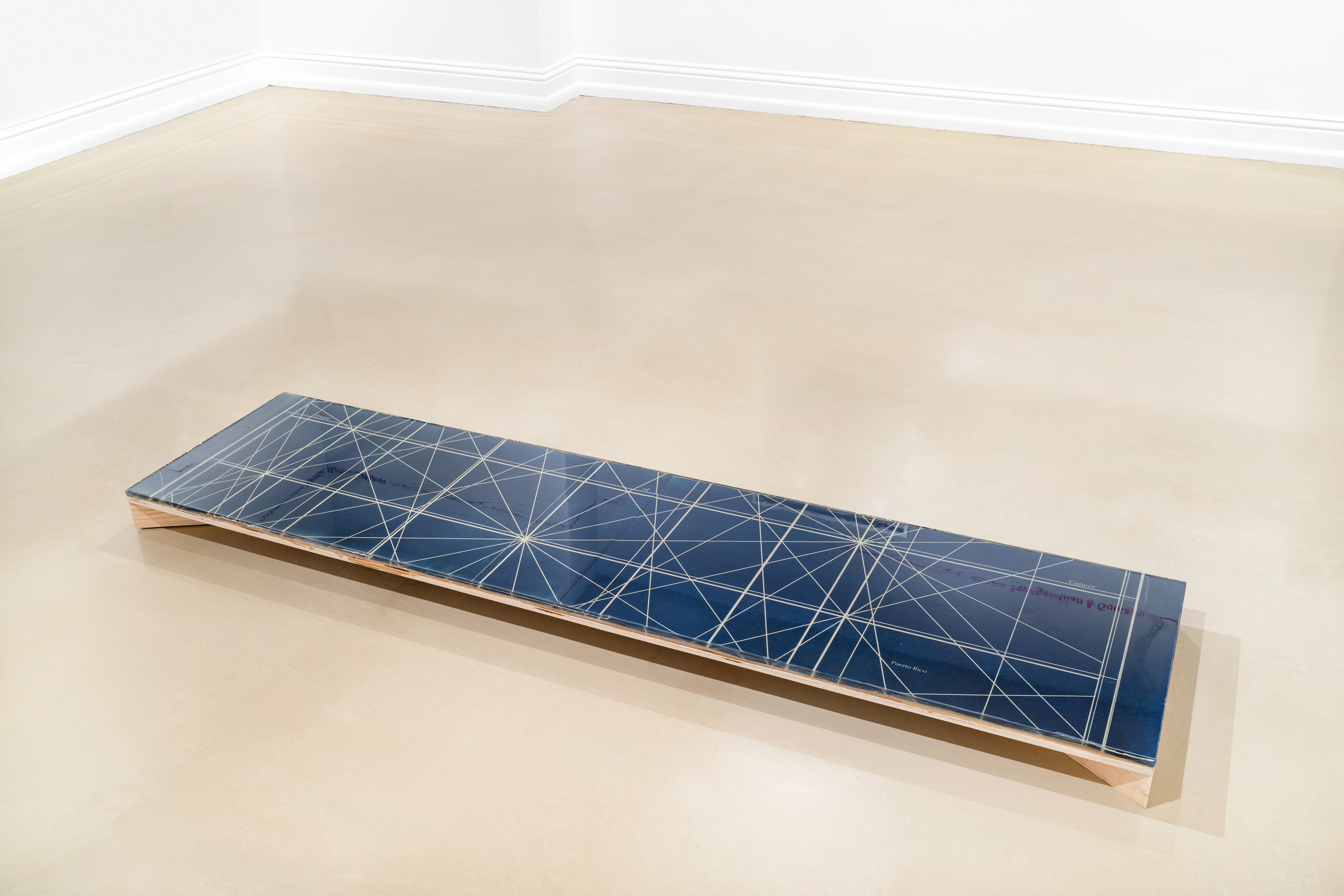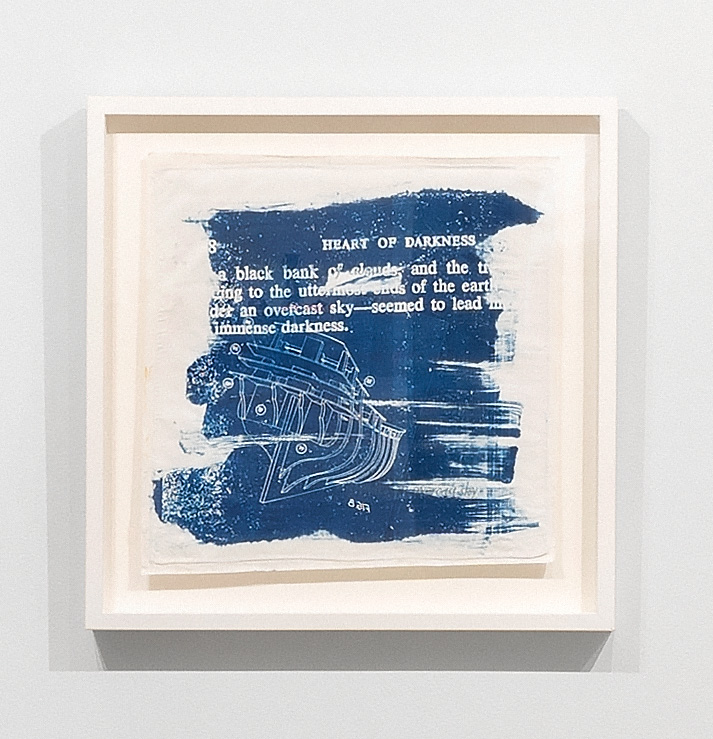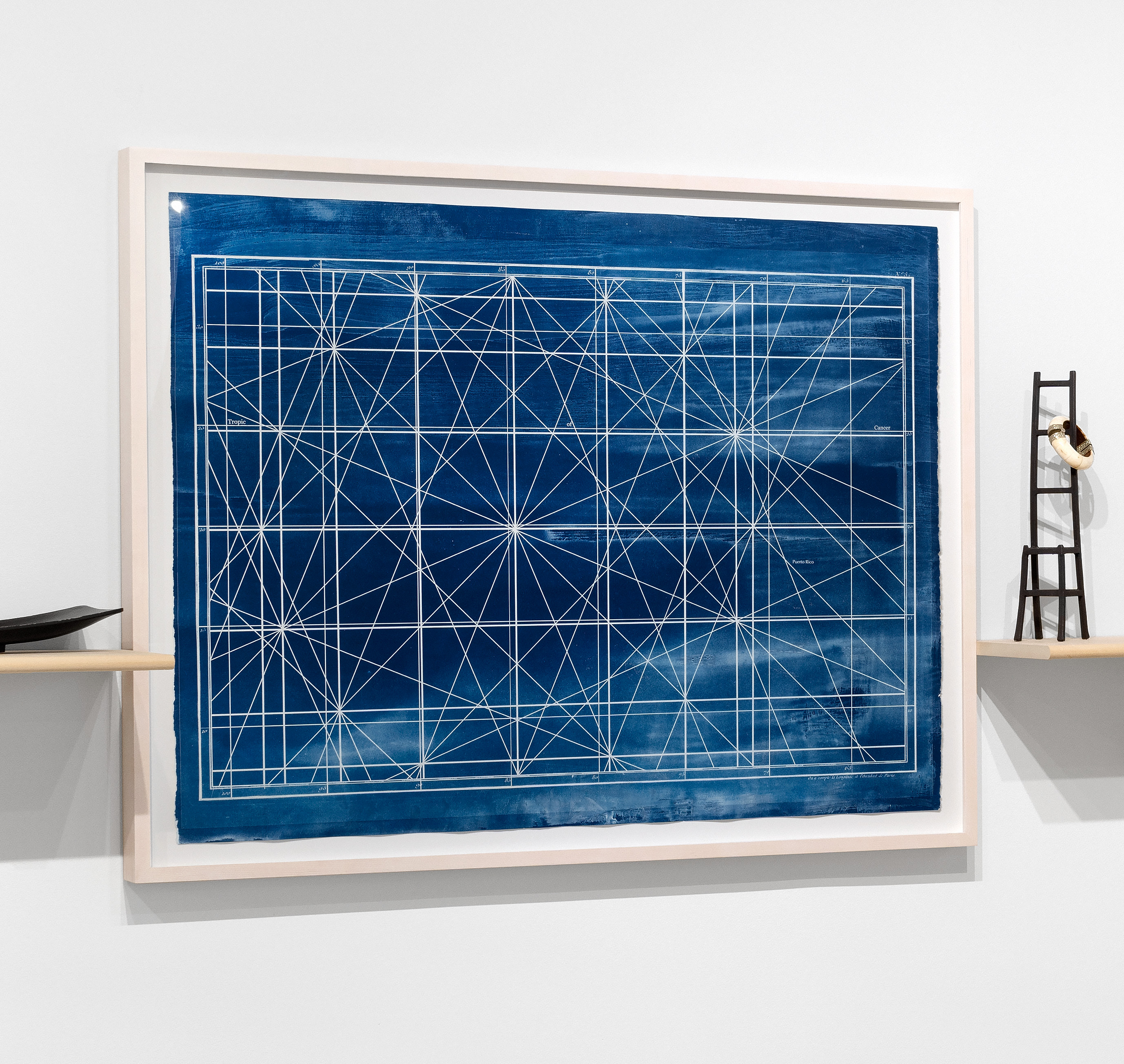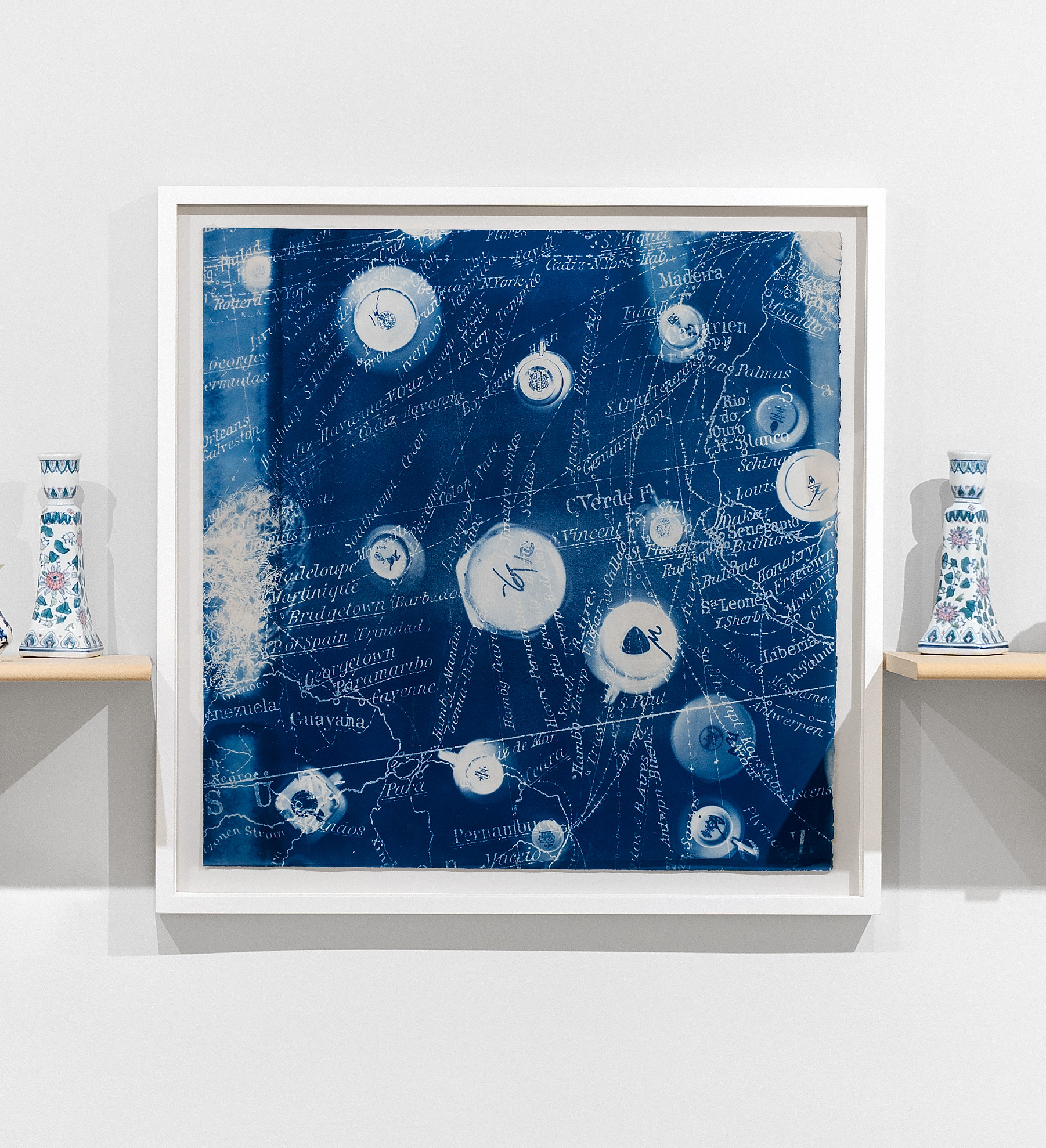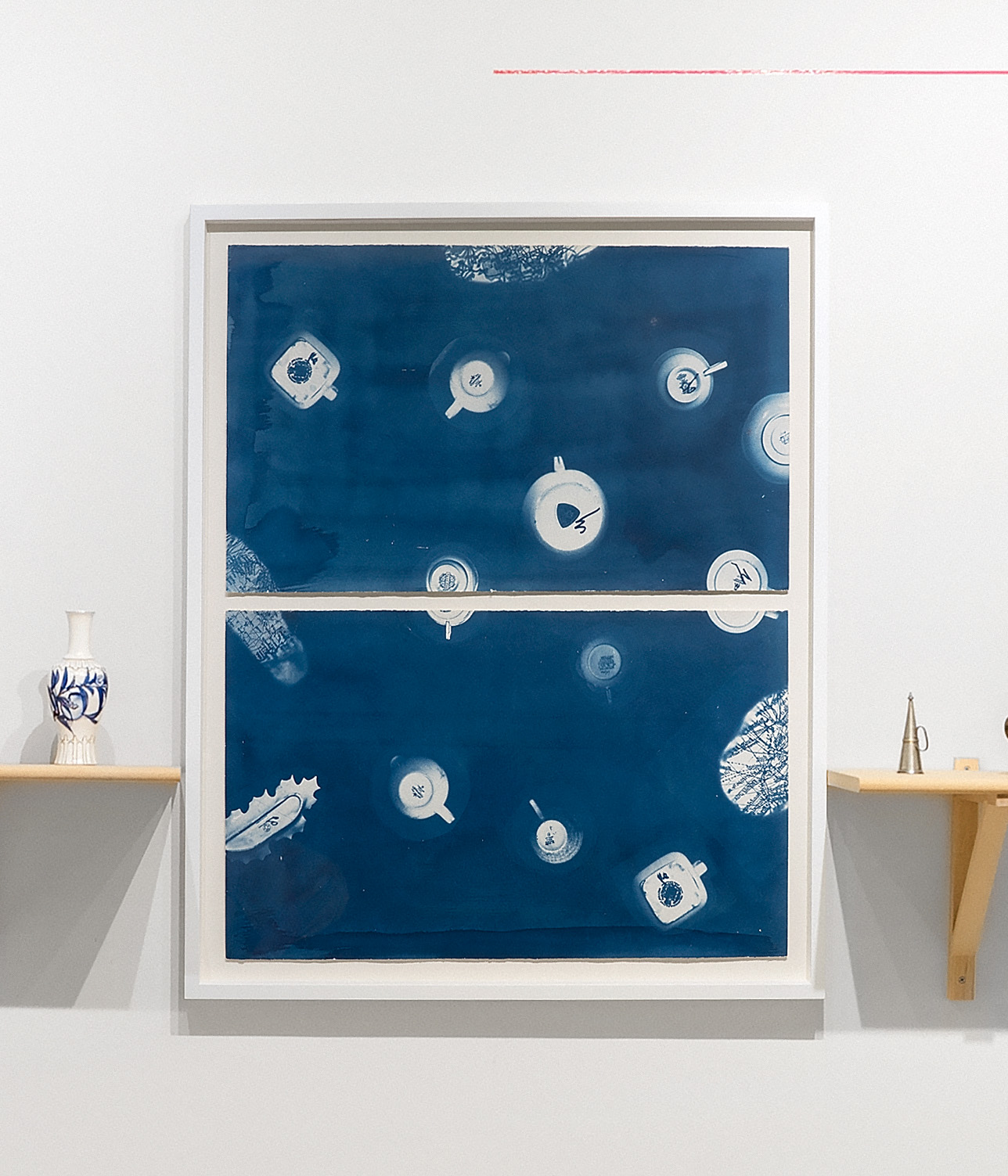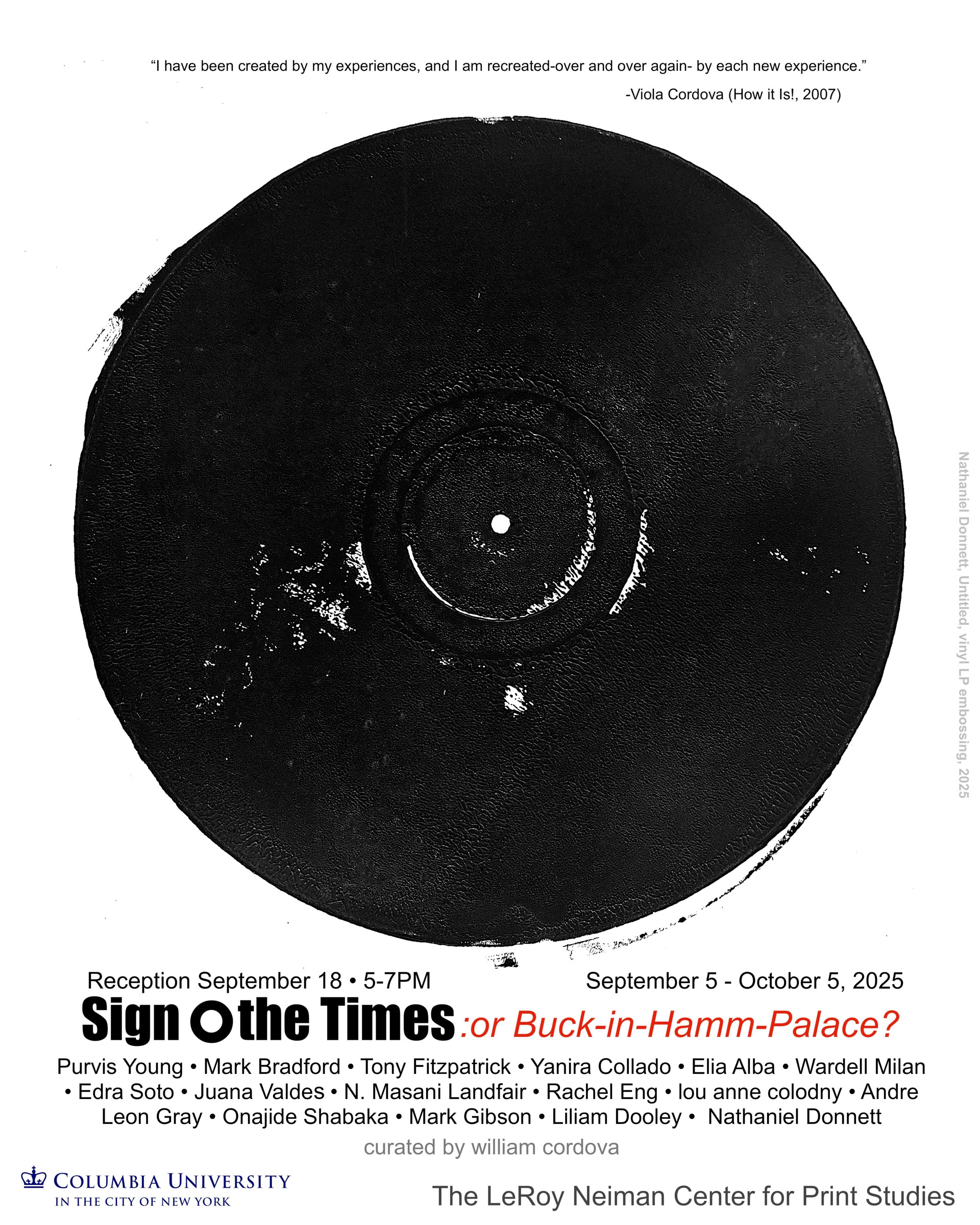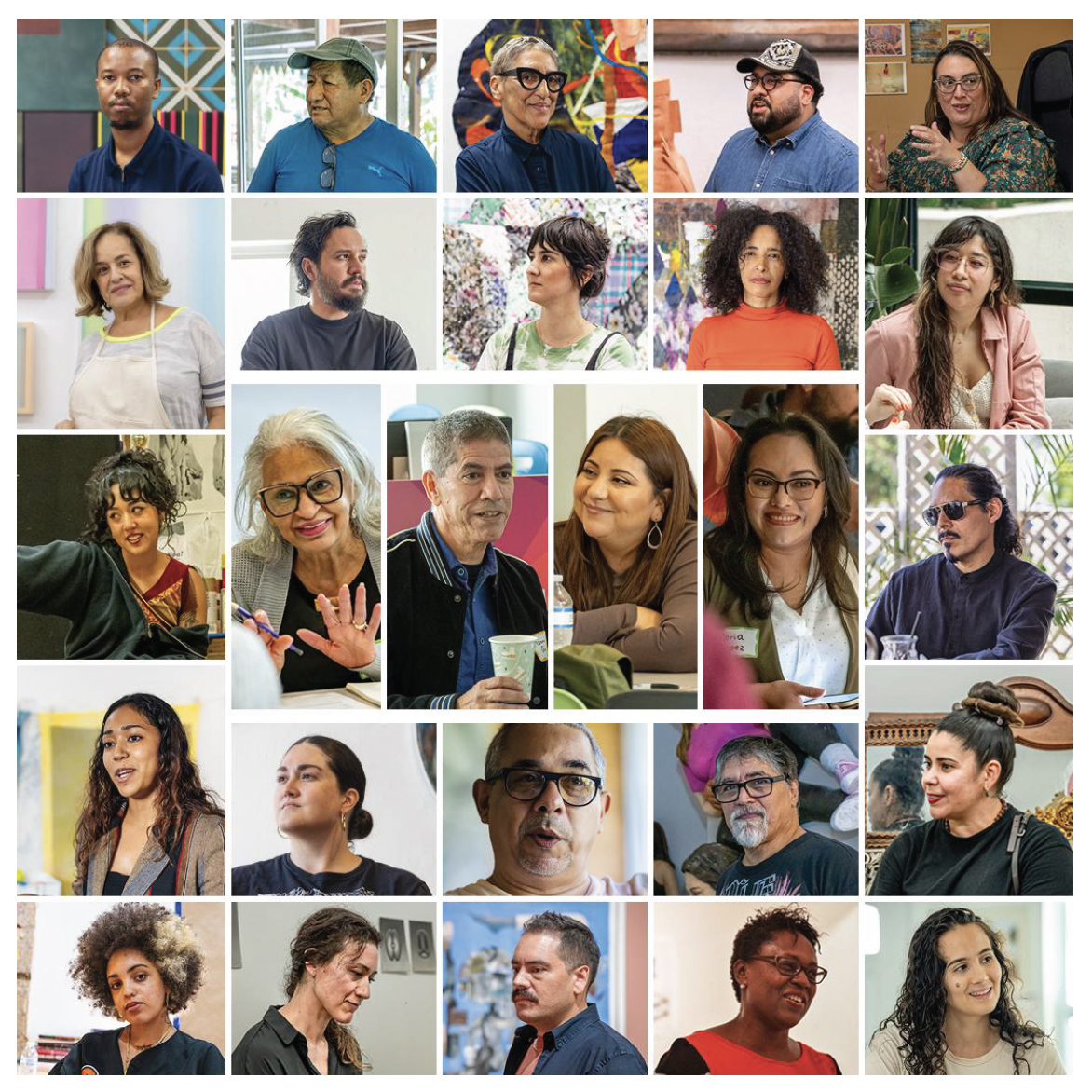Terrestrial Bodies
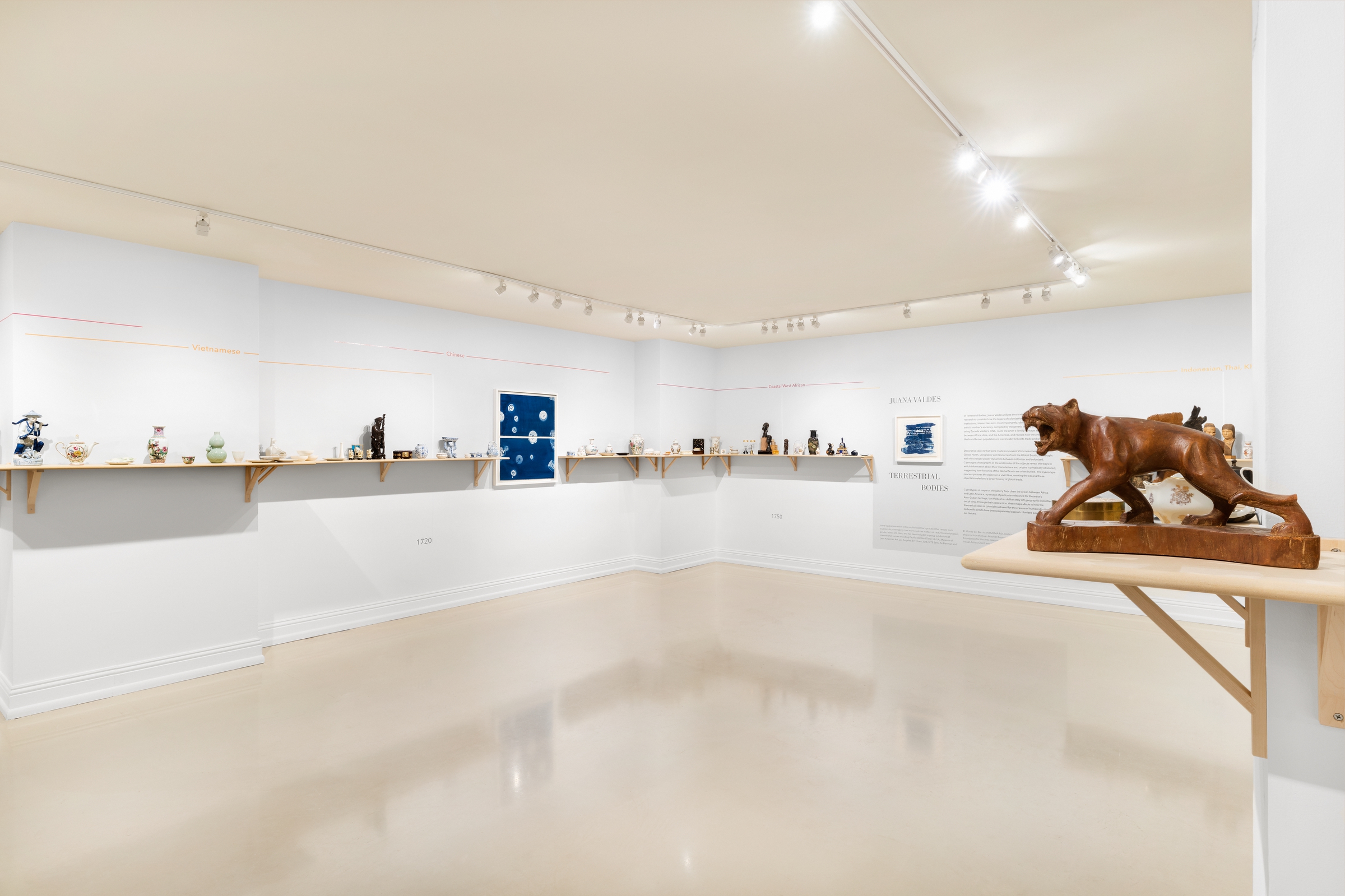
Terrestrial Bodies
Cuban Legacy Gallery, MDC Special Collections, Miami, FL
The development of Ptolemy’s Geography in early cartography enables the mapping of the earth from a globe, a sphere to a flat, two-dimensional map.
This installation consists of two main works that allude to figurative and non-figurative representations of physical bodies being moved and displaced due to the exploration/discoveries of the “new world” to the cartography ie: geometry/mathematics devised to travel over “uncharted” waters.
Terrestrial Bodies: Roteiro expands two-dimensional works into large installation that map a connection between the history of trade, globalization and the displacement of various cultures and people. These works continue to expand the artist’s research connecting the history of trade, coloniality of power, and modernity to visual representation of contemporary and historical imagery and their connection to the social ideology, political and economic dominance of the cultures that produce them and their impact on cultural memory.
These installation uses art as a means to locate the social-political discourse within the art object as a place for social dialogue. This exhibition first presented at Project
Row Houses in Houston, TX is now reconfigured for the Cuban American Gallery in the freedom Tower. Her artistic practice recollects her personal experiences of migration as an Afro Cuban-American while connecting to the global history of trade and the settlement of the Americas. As part of her exhibition for the Cuban Heritage Gallery a new collection of objects will purchased from the community in Miami.
Valdes’ work elicits migration as a complex process, constructing history through a continuum that involves both the original of the diasporic community and the new homeland. Looking at the post-colonial history in the Americas and the current representation of Latinos, Caribbean’s, Blacks or what constitute “Other” in mainstream America -what is ascribed, contested, granted, created, and it investigates the connection between what constituent multiple cultures and nations.
She joins many contemporaries in creating artwork by utilizing collecting, hoarding and recycle objects in search of locating her own identity in these spaces of representation defined by the modernist tradition. A series of mass-produce collectable ceramic objects from around the world share equal space with
hand carved wooden animal figures, brass cast ornament and metal crafted goblets. These objects are displayed on top of a shelve fashioned out of prefabricated industrial material expanding the relationship between craft, art and design. Conceptually the work puts into questions cultural ideology, historical hierarchy, economical and market dichotomies that overlay over the ceramic objects and the materials used for fabrication. How each augments the identity of the country, their culture and the historical significance they occupy. In many ways, it echoes the current trend of globalization, markets, and labor production.
VIDEO
VIDEO
VIRTUAL TOUR
Explore other exhibitions
